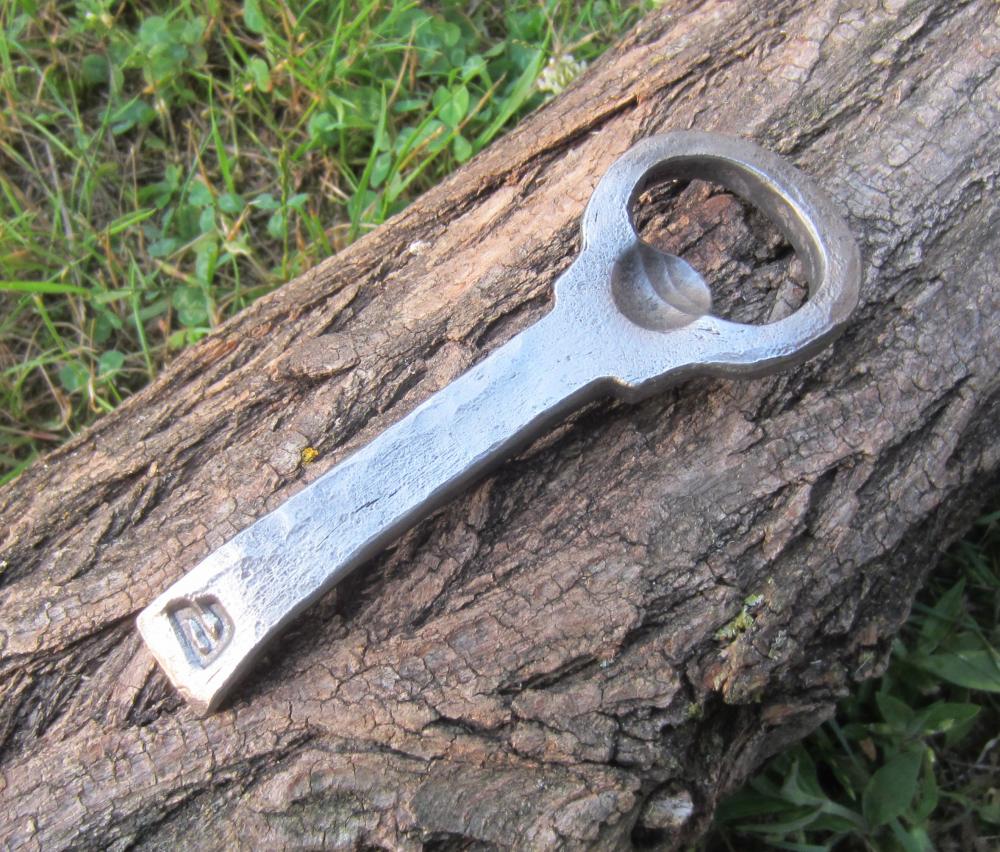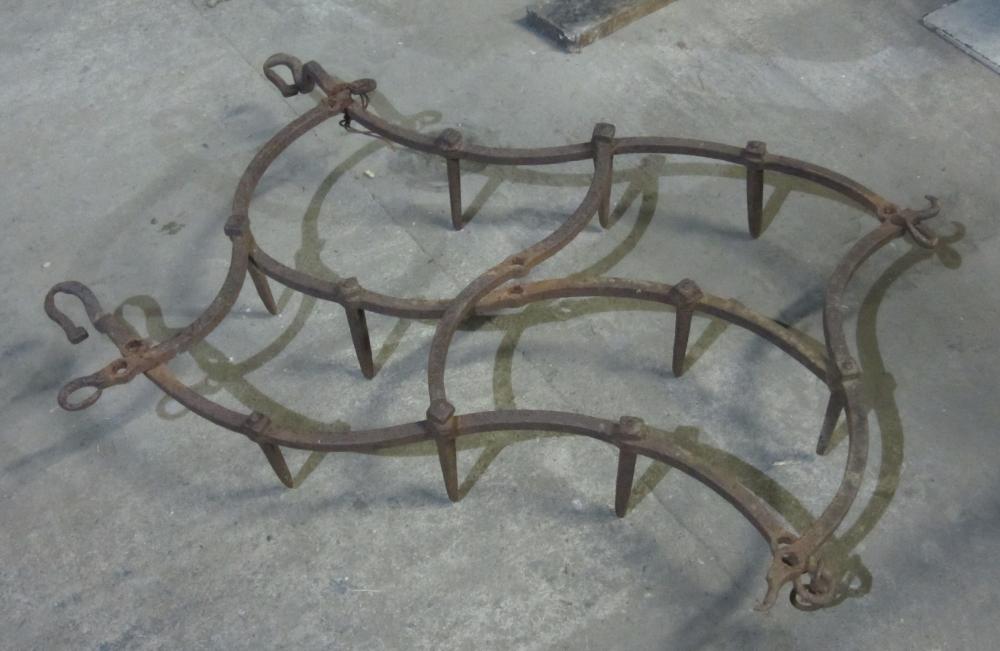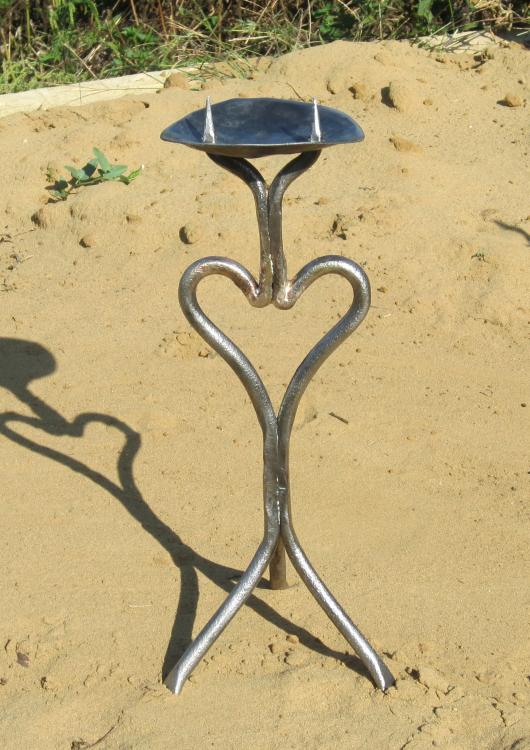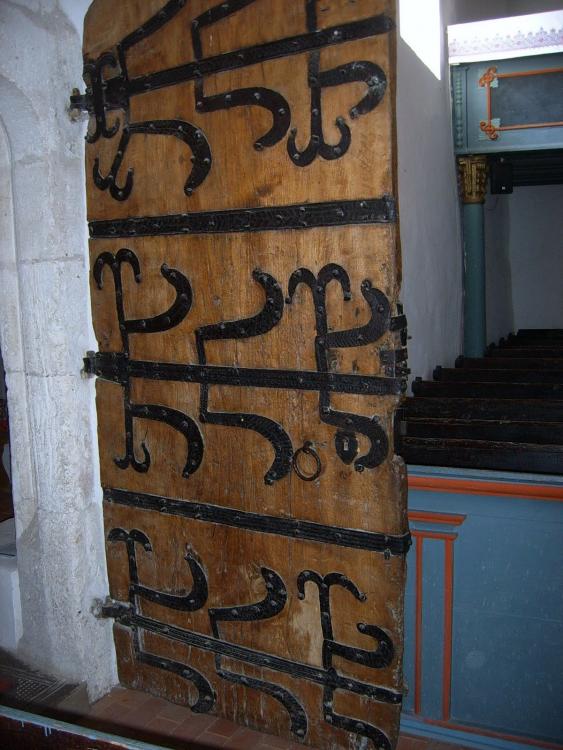-
Posts
1,056 -
Joined
-
Last visited
Content Type
Profiles
Forums
Articles
Gallery
Downloads
Events
Everything posted by Gergely
-
Hi James, No surprise: very cool knives and stuff you got there. That kwaiken is really beautiful, no wonder it selled so fast. Back to 5160 or there just was some of it laying around? Bests: Gergely
-
This is exactly what came in my mind reading the OP. +1 to the case hardening Gergely
- 6 replies
-
- antique
- composition
-
(and 1 more)
Tagged with:
-
Hi b4utoo, Seeing the sparks and based on my own experience with this kind of big bolts I'd say it's at the 0,6 % C range at max. I'd say also this is a plain carbon steel containing no special alloying elements. (I mean: Mo, Cr, V, W. I can't see any traces in the sparks reffering to these elements.) With proper heat treatment this stuff can be so hard it is very hard to cut with saw, or file, drill or machine it. Yet I wouldn't suggest to make knife kind pieces form it. 1. It's in the low C range for knives (except big ones), 2. its shape and size makes it PITA to draw it to flat. Pretty good stock for hammers, ax-shaped toys and stuff like that. Bests: Gergely
-
Kohlshwa - Made in Sweden. I think... There are some Swedish-anvil enthusiasts here in IFI, they can give you better answers. Bests and welcome to the site! Gergely
-

Show me your Bottle Openers!
Gergely replied to Arbalist's topic in Blacksmithing, General Discussion
Thanks, but I actually cheated on that - that's why I love to use harrows for bottle openers: the holes are already there! Even doing so you have to be careful. When started to draw out the ring I noticed a crack inside. So had to forge weld the whole inner ring to itself (I hope this is understandable. The ring stayed as ring but its surface delamination was corrected.) All in all this was a fun project and a cool stock to work with. Hopefully more coming... Bests Gergely -

Show me your Bottle Openers!
Gergely replied to Arbalist's topic in Blacksmithing, General Discussion
I made this yesterday. Starting stock was 3/4 square WI from an old harrow. Tried to etch it in muriatic acid to show more grain. This was the orginal harrow: Thank you Guys and Gals for keeping up this topic - lots of very good info! Bests Gergely -

Old soviet made anvil
Gergely replied to Failed Attempt's topic in Anvils, Swage Blocks, and Mandrels
Hi Lumb3rJack and welcome to IFI! There are a whole bunch of guys here on IFI from down under, maybe they can help you, just add your location to your proflie. The first rule of finding an anvil is that everything can be an anvil and forget the London pattern. Find a scrapyard and buy an old big shaft, gring its surface straight put it in a big bowl of dirt an hit some hot iron ot it. Buy a big chunk of any kind of steel put it on a stump or whatever and hit some hot iron on it. Or buy a big (10kg) hammerhead secure it on a stump - maybe a hole in the stump will help - and start hitting hot iron on it. I mean it's the hitting hot iron is the part to focus on. Better anvils will come by later. Well and TPAAT is a global technique search IFI for the how to Best of luck and happy hammering! Gergely -
Hi, How about filing something with them? Those big files are pretty good for shaping. And that rasp on the picture is an excellent hot rasp. Put a handle on it and try some hot filing - that's gonna be fun! Seriously if I were you I'd pick all the files with usable blades first, and put them to use as files. The rest... tools, knives, rasptiles and stuff
-
Hey, that's the spirit!
-
Hi, I don't know if this can help you but I tell it anyway. After some time I've quit trying to saw and break stock on yards. Neither looking for woodgrain texture helped because only one piece has shown it in the last 3 years. (I think something has to "etch" the surface to have that texture.) The method I use nowadays is to look out for square screw nuts, not-metric size stock (well, that's not gonna help you in US, but it's a clear sign here in Eu), and the special pattern rust. Square nuts are not always the sign of WI, but are the easiest to spot and worth to examine further. Stock size won't matter to you, so let's just leave it. Special rust: I don't mean the woodgrain, but there is something different in the look of MS rust and WI rust. I try to explain but these are just hunches. MS especially old MS have more pitting likely with steep walled holes. WI has more like surface rusting even when old. And somehow the colour of rust is different, maybe the WI rust is lighter... I try to shoot some pictures to explain this more. Well and I just remembered some more: looking for signs of delamination is useful: only WI can delaminate. I also look for forge weldings - at least here it looks like that blacksmiths hasn't done much more FW after WI got out of picture. And the shapes: you can tell the difference easily between the nicely rolled bars and the totally hand shaped pieces. Well that's it. I don't say these "principles" work always or they work elsewhere than Hungary but hopefully you can use some of them. Happy hunting! Gergely
-

Show Me Your Candle Holders
Gergely replied to Forging Carver's topic in Blacksmithing, General Discussion
Thank you, Aus! Well, if it gives any conform to you, this was about my fourth forge welding attempt (and 5th and 6th too ) this stuff that I get from old wagons sticks like honey. I did some ugly jobs, but it never failed the weld. Can't say the same about modern mild, as opposite to the old soft mild, which also welds pretty well (for me, not so much experience). So, happy hammering! Gergely -

Show Me Your Candle Holders
Gergely replied to Forging Carver's topic in Blacksmithing, General Discussion
I like it, Michael. I have a similar one on my mind only with small differencies. I have no idea when it can be born though. I made this one as a wedding gift for our friends. Forge welded WI from old wagon parts. -

Show Me Your Candle Holders
Gergely replied to Forging Carver's topic in Blacksmithing, General Discussion
Wonderful work! The flat stock - did you bend it cold or hot, if I may ask. Thanks for sharing, bests: Gergely -
Wow, Jim, that is one beautiful piece of work! Very inspiring! Thanks for showing it. Gergely
-
Very nice job. I was planning to use some 2 lbs roller bearings to make hammers. I wasn't sure though is 52100 good material for that - have you tried it yet? Any chipping or cracking? Thanks for sharing and best wishes: Gergely
-
I took some pictures because it's not fair without it. The wide headed axe is in mint condition, only some cleaning and re-handling needed. It might pay for the whole lot... The two small axes need to be draw out, they have enough material left in them though. Todays quiz: How can one beat up a 3 kg/6,5 lb hammer so nicely? The cutters. I just noticed there's a drill stuck in a Morse what's-its-name. Bottom left. WI and maybe WI. And a good rasp. Mostly 1 1/4 x 3/8 (30x10 mm) flat SS stock, the longest being about a yard.
-
And 202! I tried to switch to the next page but not yet. Well I actually have something to say here Hit two scrapyards today searching for some SS. Didn't find what I wanted but took some SS flat stock, some wrought or maybe wrought, a bunch of beaten up hammerheads (incl. a 11 pounder), 3 old axes, and some old milling cutter tools. Not bad, but SS costs, so better to do something nice from it and sell away... Best: Gergely
-
Hello Ausfire, What a good score! Those binding circular patterned thingies remind me of cast iron, but I suppose that's not true. That sure is the original meaning of wrought iron bed frame, isn't it? Have fun with it! Bests: Gergely
-

You might be addicted to blacksmithing if you...
Gergely replied to divermike's topic in Blacksmithing, General Discussion
I'm expecting to have it between 20-26. June. Thank you Thomas for the hint! If you have some more data of good blacksmithing related books printed in Germany I'd be very thankful to have it. I have looked up a bunch of german books, but cannot know what's worth to order here in Hungary. (The Leonhard book as an opposite costed 0,05€ + 3€ shipping, so not much risk in it anyways ) Please PM me if you have the time to bother with German Bibliographie. Thank you very much and best wishes: Gergely -
Hi Ian, Happy to hear you're getting stronger! Best wishes to you! Gergely
-

You might be addicted to blacksmithing if you...
Gergely replied to divermike's topic in Blacksmithing, General Discussion
Well, that's surprising, isn't it? (grin & hehe) It is a wonderful door made of one plank of oak 4 feet wide and about 10-12 ft tall. Bests: Gergely -

You might be addicted to blacksmithing if you...
Gergely replied to divermike's topic in Blacksmithing, General Discussion
Hi, I had to look up what that place was, but all in all you really know the feeling Wow, Gote! Thanks for sharing those amazing pics! This one above, is it romanesque or gothic? Can anyone tell it? (Maybe in PM, I really don't want to feed the off-topic line ) But I have to share this picture as it is a unique one. Hungary's only gothic doorware from the 1400-s. It's about 60 km from us in the church of a small village, named Tarpa. You enjoy this picture and you might be addicted to blacksmithing Bests: Gergely -

What electrode to use on wrought iron?
Gergely replied to DannyD's topic in Welding/Fab General Discussion
Hey, Thanks for all the good info in this topic, I just wanted to find out about this subject - did not know where to look though, but here it is. And I really hope the OP-er has already done his job with the welding as his last post came in 2008 Bests: Gergely -

You might be addicted to blacksmithing if you...
Gergely replied to divermike's topic in Blacksmithing, General Discussion
When you're in a museum of fine arts and the most interesting pieces are the door hinges... -
Very catchy looking, and very well made piece! Thanks for sharing! Gergely








